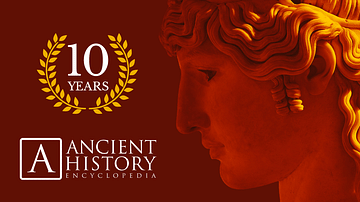Review

| Rating: | |
|---|---|
| Title: | The Chapter: A Segmented History from Antiquity to the Twenty-First Century |
| Author: | Nicholas Dames |
| Audience: | Professional |
| Difficulty: | Hard |
| Publisher: | Princeton University Press |
| Published: | 2023 |
| Pages: | 384 |
Nicholas Dames presents a detailed history of the seemingly invisible chapter. While offering insights about how the chapter frames our perception of time, his work struggles to find a final thesis about the use of this information and thus leaves the reader with a wide body of information with, paradoxically, little indexing.
To Nicholas Dames, the "chapter" has become a silent, invisible metronome of our lives. Beginning as an index for Latin encyclopedias and Greek legal codes, this simple tool for dividing text has spread far beyond its basic indexical function to become a metaphor for all areas of life. For example, Gerald Ford would have us believe we have started a new chapter after Watergate; after a painful breakup we start a new chapter of our lives; and organizations like fraternities also use chapters to increase their popularity. We do not stop to question the concept of the chapter very much; unlike sentences, paragraphs, or essays, chapters do not have strict rules governing their form, content, or reach. Nor do we ask why they begin or end where they do, or why they have the titles they do – if they have a title at all. Thus, Dames sets out to answer two questions: "Why chapters exist" – a historical question – and "What exactly they did to our sense of time" – a theoretical question.
To be sure, Dames is well-qualified to carry out this analysis. As a professor of humanities at Columbia University, he focuses on "the history and theory of the novel," marshaling a vast variety and quantity of evidence to make his case. To this end, he structures his book in chapters of its own, beginning with a general introduction before leading into a historical overview, analyzing the chapter's history from its historic origins in antiquity to its ultimate purpose as a citation tool for Biblical transcription. Finally, he focuses his final chapters on the novel: notably, he focuses almost exclusively on the Western novel, emphasizing writers like Goethe, Tolstoy, and Dickens. To support this argument, Dames offers scans of early pages that indicate signs of chapter-like divisions, includes charts and graphs that analyze the lengths of chapters statistically and offers deep consideration of how content and form shape one another. The book benefits from these insets, if only because they force us to consider our own definitions for "chapter." Is a chapter defined by its length? By its subject? Dames uses these tools to make us conceive of the chapter as time, cementing the crux of his argument.
Then we must ask: to what end? This type of book purports to find something remarkable in the history of the "musty" and "common," and thus they must always make a kind of case for its existence to a skeptical reader. In this respect, it is a bit difficult to say who this book is for: it is certainly far too advanced and too densely written for most students, not of much interest to the general public, and perhaps already familiar to experts. There are certainly many interesting observations here. For example, Dames rightly points out that chapter titles are only vaguely part of the novel's content, usually expressed by neither the narrator nor the characters. The chapter is a third point of view, often presenting an ironic commentary on the text. But how useful is this insight? Where is that "so what" that this book is always looking for?
To venture one theory: this book is about the great but often secretive power of the framing device. By conceiving life, history, or politics in chapters, we permit a vast, inchoate blob of time, with all its currents and eddies, to be chopped up into all-too-neat chunks. A canny manipulator can easily exploit the power to reorganize "time as a series of ordered linear segments," and thus manufacture divisions that reflect the interests of the person making the division. Readers of this book will sit up and take notice the next time a conniving politician, smiling influencer, or manipulative ex claims to have started a new chapter and wonder what exactly hides in the white space between the end of one segment and the start of the next.
Readers interested in the history of the novel might enjoy The Lives of the Novel (2013) by Thomas Pavel, while those seeking a book on writing more generally might find A History of Writing (2002) by Ann-Marie Cristin interesting.
About the Reviewer
Cite This Work
APA Style
Zachary, N. (2024, August 05). The Chapter: A Segmented History from Antiquity to the Twenty-First Century. World History Encyclopedia. Retrieved from https://www.worldhistory.org/review/461/the-chapter-a-segmented-history-from-antiquity-to/
Chicago Style
Zachary, Noah. "The Chapter: A Segmented History from Antiquity to the Twenty-First Century." World History Encyclopedia. Last modified August 05, 2024. https://www.worldhistory.org/review/461/the-chapter-a-segmented-history-from-antiquity-to/.
MLA Style
Zachary, Noah. "The Chapter: A Segmented History from Antiquity to the Twenty-First Century." World History Encyclopedia. World History Encyclopedia, 05 Aug 2024, https://www.worldhistory.org/review/461/the-chapter-a-segmented-history-from-antiquity-to/. Web. 29 Apr 2025.




